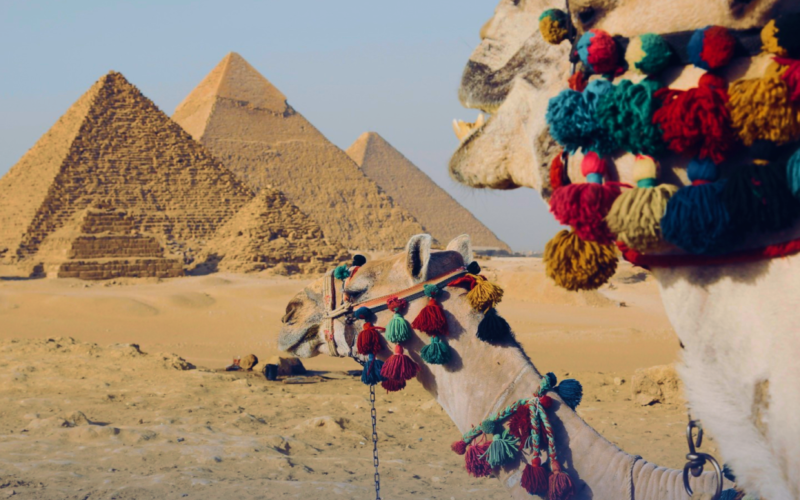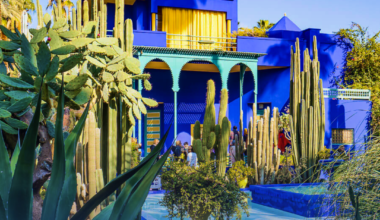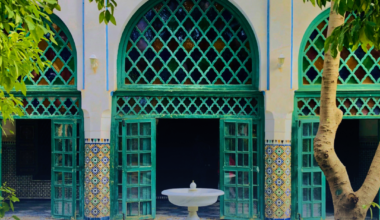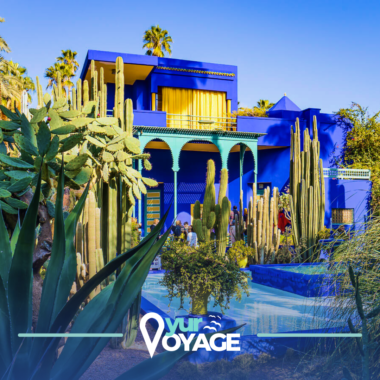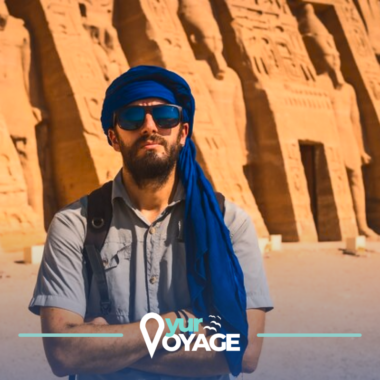Topics
Welcome to the land of pharaohs, where the monumental pyramids stand as eternal sentinels of Egypt’s rich history. The Pyramids of Giza, one of the Seven Wonders of the Ancient World, continue to captivate travelers with their grandeur and enigmatic allure. Join us on an exploration of these ancient wonders, delving into their history, architecture, and the profound cultural significance that has echoed through millennia.
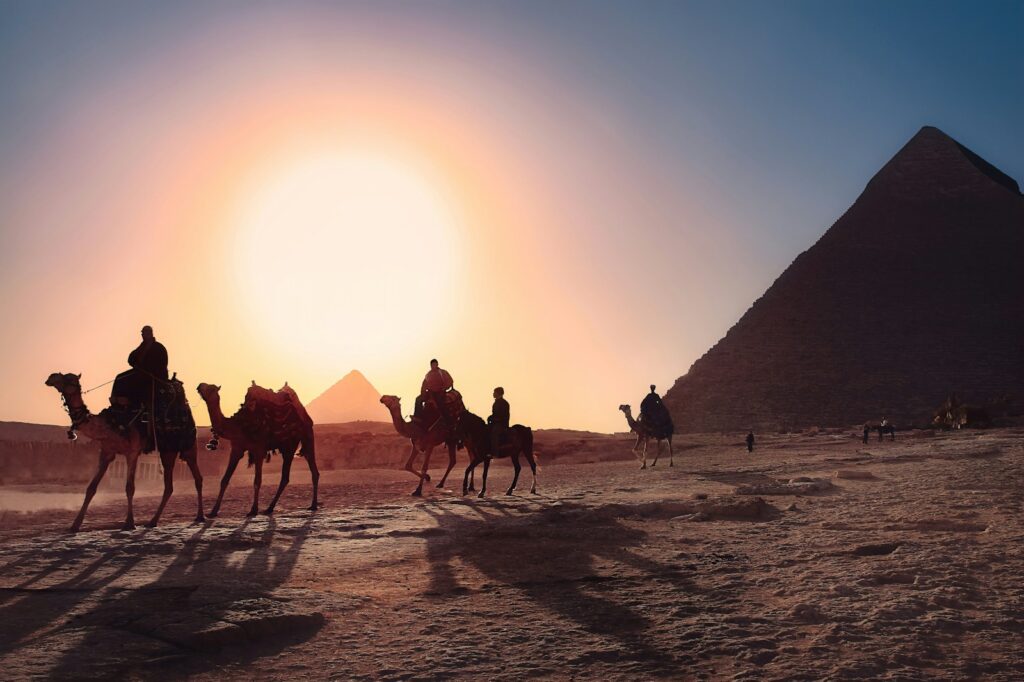
A Glimpse into Egypt’s Ancient History
The history of the pyramids is as vast and timeless as the Egyptian sands that cradle them. The construction of the Pyramids of Giza began around 2580 BC during the Fourth Dynasty, a testament to the architectural prowess and organizational skills of the ancient Egyptians. Khufu, Khafre, and Menkaure, the pharaohs for whom these pyramids were built, sought to secure their eternal resting places while affirming their divine connections.
Travel Tip:
Gain a comprehensive understanding of ancient Egyptian history by visiting the Egyptian Museum in Cairo before embarking on your pyramid exploration.

The Pyramids of Giza: Architectural Marvels
The Pyramids of Giza stand as colossal marvels, each with its unique characteristics. The Great Pyramid of Khufu, the largest of the three, originally stood at 146.6 meters but now slightly shorter due to the loss of the outer casing stones. The Pyramid of Khafre is distinguished by the Sphinx, a colossal limestone statue with the body of a lion and the head of Pharaoh Khafre. The Pyramid of Menkaure, the smallest of the three, completes this awe-inspiring trio.
Facts:
- The Great Pyramid of Khufu originally had a smooth, polished limestone casing that reflected sunlight, creating a dazzling effect.
- The Pyramids of Giza were constructed using an estimated 2.3 million blocks of stone, each weighing several tons.

Decoding the Pyramid Construction Techniques
The construction techniques employed by the ancient Egyptians remain a subject of fascination and debate. Theories abound regarding the methods used to transport and lift the massive stone blocks. Some believe that straight or zigzagging ramps were employed, while others propose the use of counterweights and levers.
Quote: “The construction of the pyramids was a testament to the ancient Egyptians’ ingenuity and engineering capabilities, sparking admiration and intrigue throughout the ages.”
Mysteries Surrounding the Pyramids
The Pyramids of Giza continue to be shrouded in mysteries, captivating the imagination of historians and enthusiasts alike. The precise methods of construction, the purpose of hidden chambers, and the alignment with celestial bodies have fueled endless speculations and investigations.
The Great Pyramid of Khufu has an approximate base area of 53,000 square meters.
The Solar Boat Museum: A Glimpse into the Past
Adjacent to the Great Pyramid, the Solar Boat Museum houses the reconstructed solar boat of Pharaoh Khufu. This fascinating exhibit offers a rare glimpse into the ancient Egyptians’ beliefs in the afterlife and their meticulous burial practices.
Travel Tip:
Include a visit to the Solar Boat Museum for a more holistic understanding of the cultural and religious significance associated with the pyramids.
The Pyramids at Night: A Surreal Experience
While the pyramids are awe-inspiring during the day, witnessing them illuminated at night adds a touch of magic to the experience. The Sound and Light Show, held regularly at the Giza Plateau, combines history, narration, and dramatic lighting to create a captivating spectacle.
Travel Tip:
Check the schedule for the Sound and Light Show in advance, and consider booking tickets to witness the pyramids come to life after sunset.

Preservation Efforts and Tourism Impact
The pyramids, despite their enduring nature, face challenges due to environmental factors and the impact of tourism. Preservation efforts are ongoing, with initiatives aimed at maintaining the structural integrity of these ancient wonders. Responsible tourism practices, such as adhering to designated pathways and respecting site regulations, are crucial to preserving Egypt’s cultural heritage.
External Resource:
For updates on preservation efforts and guidelines for responsible tourism, refer to the Egyptian Ministry of Tourism and Antiquities.
Conclusion
Exploring the Pyramids of Giza is not merely a journey through ancient history; it’s an immersion into the ingenuity, spirituality, and cultural richness of the Egyptian civilization. From the colossal structures to the mysteries that enshroud them, the pyramids beckon travelers to uncover the secrets held within their timeless embrace. As you stand in the shadow of these monumental wonders, you connect with the enduring legacy of a civilization that has left an indelible mark on the sands of time.
Frequently Asked Questions (FAQ)
Q1: What is the best time to visit the Pyramids of Giza?
A1: The best time to visit the Pyramids of Giza is during the cooler months of autumn and spring, specifically from October to April. The temperatures are more comfortable for exploration, and the sites are generally less crowded.
Q2: Are there restrictions on photography at the Pyramids?
A2: While photography is generally allowed at the Pyramids of Giza, some interior spaces may have restrictions. It’s advisable to check with the site authorities and be respectful of any posted guidelines to ensure a positive experience.
Q3: Can visitors enter the pyramids?
A3: Yes, visitors can enter the pyramids for an additional fee. The Great Pyramid, in particular, offers the opportunity to explore its interior chambers. It’s recommended to check the availability of entry tickets and any restrictions in advance.
Q4: How long does it take to explore the Pyramids of Giza?
A4: The time required to explore the Pyramids of Giza depends on individual preferences. A comprehensive visit, including the three main pyramids, the Sphinx, and additional sites like the Solar Boat Museum, may take a full day. However, a more focused visit can be accomplished in a few hours.
Q5: What should visitors wear when exploring the pyramids?
A5: It’s advisable to wear comfortable and breathable clothing, especially if visiting during warmer months. Comfortable footwear for walking and exploring uneven terrain is recommended. Additionally, it’s advisable to bring a hat, sunscreen, and water to stay hydrated.
Q6: How can visitors contribute to the preservation of the pyramids?
A6: Visitors can contribute to the preservation of the pyramids by adhering to designated pathways, refraining from touching or climbing on the structures, and following site regulations. Additionally, supporting responsible tourism practices and respecting the environment contribute to the long-term conservation of these ancient wonders.
